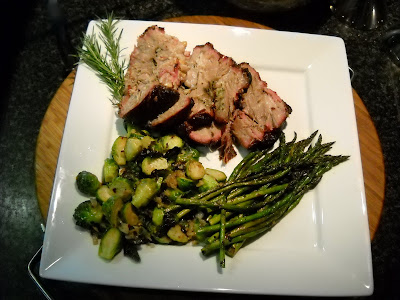 Pâté de Campagne
Pâté de Campagne
The wine group I belong to had an event this past Sunday. Almost every month this group get together and does a "theme" tasting. These are social events, but they are also educational as well (if you pay attention). This month we contrasted four Washington Syrah's against four Syrah based wines from the Northern Rhone.
I love what Washington is doing with wine, but in this tasting they were like bringing a knife to a gun fight. The Northern Rhone defines that grape and it came thorough (for me) like the champ that it is.
We typically have a pot luck meal after our events and what better to take than a Country Pâté? I spotted this recipe in Bon Appetit and I need to give Molly Wizenberg credit for this recipe. The only deviations were that I used a smoked hog jowl bacon mixed with the pork and I used a French Ham for the center layer..........oh, yeah, I also substituted nutmeg for the allspice. The sign above says Pork, Pork, Pork. I forgot to add another item....Pork (Jowl bacon)
Bon Appetit!
I love what Washington is doing with wine, but in this tasting they were like bringing a knife to a gun fight. The Northern Rhone defines that grape and it came thorough (for me) like the champ that it is.
We typically have a pot luck meal after our events and what better to take than a Country Pâté? I spotted this recipe in Bon Appetit and I need to give Molly Wizenberg credit for this recipe. The only deviations were that I used a smoked hog jowl bacon mixed with the pork and I used a French Ham for the center layer..........oh, yeah, I also substituted nutmeg for the allspice. The sign above says Pork, Pork, Pork. I forgot to add another item....Pork (Jowl bacon)
Bon Appetit!






















